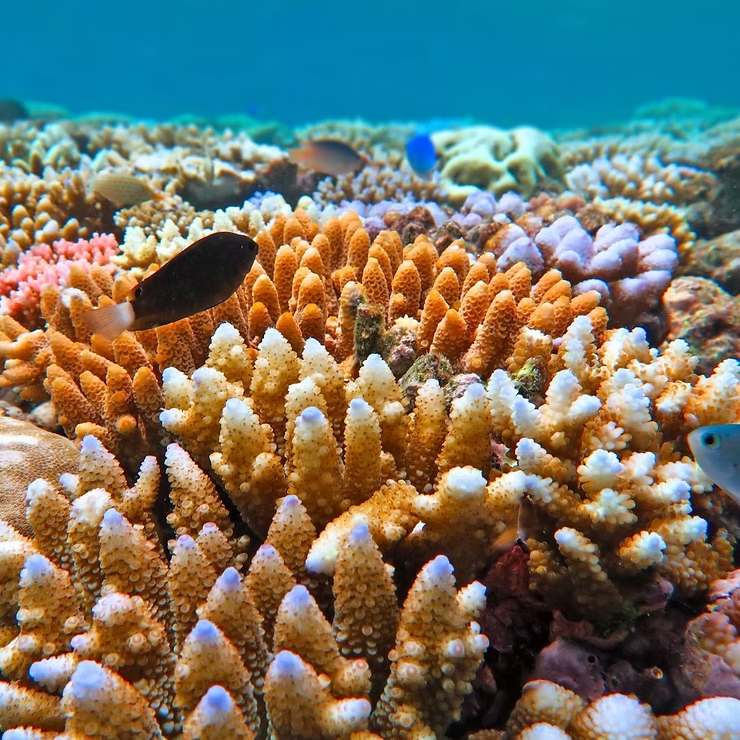Introduction
The Great Barrier Reef is more than a breathtaking natural wonder—it is a living hub of marine biodiversity. Stretching across thousands of kilometers, this underwater ecosystem shelters corals, fish, and countless unique creatures. In this article, we journey into its mesophotic coral zones, uncover deep-sea discoveries, and highlight conservation efforts ensuring its survival for generations to come.
Key Takeaways
- The Verde Island Passage is home to 1,700 fish species and 300 coral species.
- Mesophotic coral ecosystems play a critical role yet remain largely unexplored.
- Scientists continue to uncover new deep-sea species and phenomena.
- Volcanic environments reveal life forms with remarkable adaptations.
- Marine Protected Areas and community action are essential for ocean conservation.
Diving into the Twilight Zone
Exploring Mesophotic Coral Ecosystems
Between 50 and 150 meters deep lies the twilight zone, a mysterious region where sunlight dwindles and bioluminescence reigns. This zone offers shelter for resilient corals and is a frontier for discovery, with new species found on nearly every expedition. Though little known, its ecosystems may hold answers for coral survival in a warming world.
Discovering New Species
Recent expeditions in the Clarion-Clipperton Zone revealed up to 30 potential new species. Using advanced remotely operated vehicles, scientists uncovered vibrant coral gardens and alien-like marine life. Each discovery enriches our understanding of evolution and emphasizes the urgent need to protect fragile deep-sea habitats from mining and other human threats.
The Importance of Deep Reefs
- Provide refuge for shallow-water species under stress from bleaching.
- Serve as nurseries for young marine life.
- Act as biodiversity hotspots with countless undiscovered organisms.
These ecosystems are often overlooked but play a pivotal role in maintaining the ocean’s balance.
Verde Island Passage: Marine Diversity’s Epicenter
Fish and Coral Abundance
Known as the “center of the center” of marine biodiversity, the Verde Island Passage dazzles divers with schools of jacks, snappers, and reef sharks moving through coral gardens. With over 1,700 fish and 300 coral species, it is an underwater gallery of colors, textures, and life.
Ancient Inhabitants of the Deep
Living Fossils
Creatures such as the coelacanth, once thought extinct, remind us of life’s resilience. Gelatinous species with glassy bodies, glowing fins, and alien features inhabit volcanic zones, proving that the ocean still holds countless evolutionary mysteries.
Unveiling the Ocean’s Secrets
Recent Discoveries
- Smithsonian scientists identified a new deep-sea coral off Puerto Rico.
- Surveys revealed half a trillion coral colonies thriving in the Pacific.
- Explorations near the Cocos Islands documented bizarre creatures with fangs and luminous skin.
Life Near Deep-Sea Volcanoes
Hydrothermal vents provide energy for ecosystems that thrive without sunlight. From blind eels with gelatinous skin to hermaphrodite lizard fish, these species showcase extraordinary adaptations for survival in extreme conditions.
Conservation and Marine Sanctuaries
Protecting Fragile Ecosystems
Marine Protected Areas safeguard critical habitats, while community-led initiatives in places like Papua New Guinea prove that grassroots conservation can have global impact. These sanctuaries not only protect biodiversity but also restore damaged areas and support sustainable livelihoods.
The Great Barrier Reef: A Mosaic of Life
The Reef teems with thousands of species and vibrant coral structures, yet faces immense threats from climate change, overfishing, and pollution. Conservation efforts—spanning local stewardship to global partnerships—are vital to preserve this living wonder for future generations.
Conclusion
The Great Barrier Reef and its neighboring ecosystems remind us of the ocean’s resilience, mystery, and beauty. From twilight corals to living fossils, each discovery deepens our responsibility to protect these treasures. With continued exploration and conservation, we can ensure that this mosaic of life and color thrives well into the future.
Frequently Asked Questions
Why is the Verde Island Passage significant?
It hosts unmatched biodiversity with over 1,700 fish species and 300 coral types.
What are mesophotic coral ecosystems?
These deep reefs, found 30–150 meters below, provide refuge and sustain marine biodiversity.
What recent discoveries stand out?
Scientists have identified new deep-sea corals, gelatinous species, and bizarre volcanic life forms.
What threatens the Great Barrier Reef?
Climate change, pollution, and overfishing are the major threats, alongside human-driven coastal development.
How are oceans being protected?
Marine Protected Areas and community-led initiatives safeguard ecosystems and promote sustainable practices.

